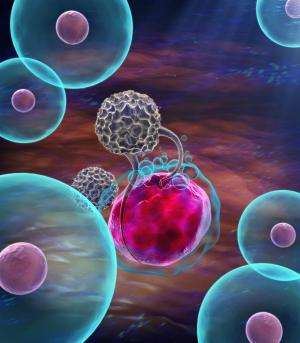Abstract
Bacterial cell wall components provide various unique molecular structures that are detected by pattern recognition receptors (PRRs) of the innate immune system as non-self. Most bacterial species form a cell wall that consists of peptidoglycan (PGN), a polymeric structure comprising alternating amino sugars that form strands cross-linked by short peptides. Muramyl dipeptide (MDP) has been well documented as a minimal immunogenic component of peptidoglycan1,2,3. MDP is sensed by the cytosolic nucleotide-binding oligomerization domain-containing protein 24 (NOD2). Upon engagement, it triggers pro-inflammatory gene expression, and this functionality is of critical importance in maintaining a healthy intestinal barrier function5. Here, using a forward genetic screen to identify factors required for MDP detection, we identified N-acetylglucosamine kinase (NAGK) as being essential for the immunostimulatory activity of MDP. NAGK is broadly expressed in immune cells and has previously been described to contribute to the hexosamine biosynthetic salvage pathway6. Mechanistically, NAGK functions upstream of NOD2 by directly phosphorylating the N-acetylmuramic acid moiety of MDP at the hydroxyl group of its C6 position, yielding 6-O-phospho-MDP. NAGK-phosphorylated MDP—but not unmodified MDP—constitutes an agonist for NOD2. Macrophages from mice deficient in NAGK are completely deficient in MDP sensing. These results reveal a link between amino sugar metabolism and innate immunity to bacterial cell walls.
Main
To identify factors required for MDP recognition, we conducted a forward genetic screen in KBM-7 cells, a near-haploid cell line amenable to gene-trap mutagenesis7. To identify cells in which MDP-dependent pro-inflammatory gene expression occurs, we generated a clonal cell line in which mScarlet is linked to the C terminus of endogenous interleukin-1B (IL-1B) (KBM-7-IL-1BmScarlet), separated by a self-cleaving peptide (Fig. 1a). IL-1B was chosen for its high inducibility following NF-κB activation in these cells. KBM-7-IL-1BmScarlet cells were treated with L18-MDP, a lipophilic derivative of MDP in which the OH group of the C6 position is esterified with stearic acid8. This modification results in enhanced uptake of MDP and hydrolysis of the ester bond within the cell, releasing MDP in the cytoplasm. Cells stimulated with L18-MDP expressed high levels of mScarlet in a NOD2-dependent manner (Fig. 1b,c). Similar results were obtained when stimulating cells with MDP, although much larger amounts of MDP were required to achieve a similar level of activation. As expected, IL-1B–mScarlet expression following treatment with the specific NOD1 agonist iE-DAP9,10 or stimulation with TNF was not decreased in the absence of NOD2 (Fig. 1c). KBM-7-IL-1BmScarlet cells were subjected to gene-trap mutagenesis, expanded and stimulated with L18-MDP. We then sorted these cells according to high or low mScarlet expression. We used deep sequencing to identify gene-trap insertions and calculated enrichment for mutations in genes11. This revealed 102 genes (Padj < 0.05) that positively regulated MDP-dependent IL-1B–mScarlet expression (Fig. 1d). As well as IL1B itself, we identified genes encoding components of the NOD2 pathway12, including NOD2, RIPK2 and XIAP, and many genes encoding factors involved in NF-κB and MAPK signalling (Fig. 1e). In addition to these expected components, we identified NAGK as a highly significant hit (Padj < 3.02 × 10−23). NAGK is a member of the sugar kinase/Hsp70/actin superfamily, whose members phosphorylate certain substrates in an ATP-dependent manner13. In the hexosamine biosynthetic salvage pathway, NAGK mediates the phosphorylation of N-acetylglucosamine (GlcNAc) to GlcNAc-6-phosphate, which is then used for biosynthesis of UDP-GlcNAc, the critical component required for O-linked-N-acetylglucosaminylation and N-linked glycosylation14 (Extended Data Fig. 1a). GlcNAc can be derived from lysosomal degradation of endogenous glycoconjugates or nutritional sources, yet it appears to have only a minor role in UDP-GlcNAc biosynthesis when there are abundant nutritional sources6,15. Thus, it seemed unlikely that the loss of MDP-dependent pro-inflammatory gene expression in the absence of NAGK could be attributed to a defect in this pathway. Indeed, no other salvage pathway or UDP-GlcNAc biosynthesis components were identified as significant hits in this screen (Extended Data Fig. 1b). Co-expression analyses revealed that NAGK is co-expressed with genes primarily associated with immune cell functions, such as granulocyte activation (Extended Data Fig. 2). Indeed, across different cell types and tissues, NAGK is expressed mainly within immune cells, most prominently in the myeloid compartment. Together, these data suggested that NAGK has an important role in MDP recognition leading to pro-inflammatory gene expression, independent of its function in the hexosamine salvage pathway…







